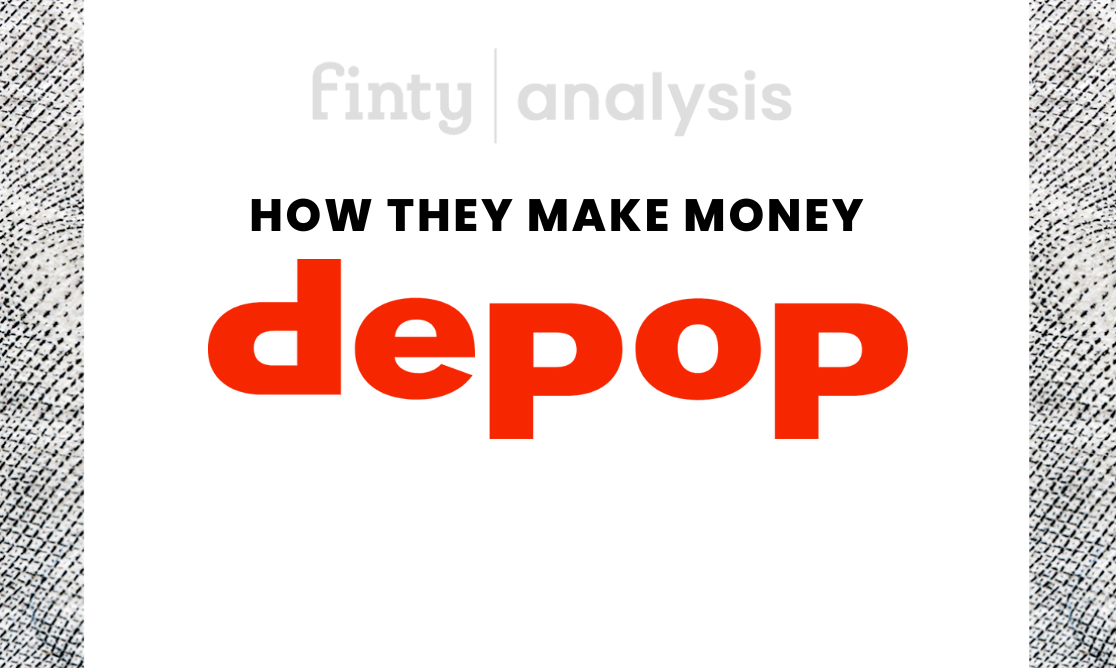Depop is a peer-to-peer online fashion marketplace enabling users to buy, sell and discover unique fashion remotely through a social e-commerce platform and mobile app. In 2021, More than 30 million users — mostly Gen Z — buy and sell through its engaging, curated, and visual-first platform.
It was founded by Simon Beckerman in 2011 at a tech incubator in Roncade, Italy. A year later, after a round of seed investment, Beckerman moved Depop’s headquarters to London, where it remains today. Since then, Depop has opened offices in New York, Sydney, and Milan, indicative of its main markets.
Around 90% of Depop active users are below the age of 26. By selling everything from brand new items to vintage flares and handmade clothing, Depop has become synonymous with sustainable fashion and thrifting.

Coming up next
What does Depop do?
Depop has been designed for fashion users to buy and sell used clothing and fashion items from where they are. It caters to the needs of Generation Z — consumers between the ages of 7 to 25 — and embraces their passion for cultural fluidity and sustainable consumption. It has helped make second-hand fashion trendy.
Vintage clothing, streetwear, one-of-a-kind items, and Y2K are the biggest selling styles on Depop.
How does Depop work?
Sellers on Depop promote their goods on social media, creating content that promotes their products and vying against each other to become fashion social media influencers.
Depop caters to the growing number of Gen Z consumers who, by the year 2035, will make up to 40% of the luxury market. Is secondhand clothing a passing trend? No, even Vogue wrote about Depop's impact on fashion markets.
How Depop makes money
Depop makes money by charging a platform fee, transaction fees, foreign exchange fees, and advertising.
Platform fees
Depop charges a flat rate of 10% on the total selling price, inclusive of shipping costs on every successful sale through the platform.
Transaction fees
Depop charges a transaction fee to process payments. Users in the US, for example, pay 2.9% plus $0.30, while users in the UK pay transaction fees of 2.9% plus 30p. Transaction fees apply to all payments made via Depop, Apple Pay, Google Pay, credit card, debit card, and PayPal.
Advertising
Sellers on Depop can advertise their merchandise. Although this likely generates significant annual revenue for Depop, details are not freely available.
75% of gross sales come from existing buyers, and nearly half are likely to buy again within one year. That’s a lot of eyeballs to serve ads to.
Foreign exchange fees
Foreign currency exchange fees is another growing revenue stream for Depop since the platform has registered users from over 150 countries.
Future growth engine
In the US alone, the secondhand market — for thrift, resale, and donation — is projected to grow to $64 billion by 2024 at a projected annual growth rate of 39% from 2019-2024. Depop is well positioned to ride that tremendous growth wave.
Depop users' views on sustainability — with 75% surveyed expressing the desire to reduce clothing consumption — extend to fashion that also saves the planet.
As Depop's chief brand officer Peter Semple observes, “To some degree, we have a closer relationship with Gen Z than almost any other institution in the world at scale.”
Reflecting Depop's strategic value for penetrating the high potential secondhand market, Depop was acquired by Etsy in mid-2021 for $1.625 billion. Depop will, however, continue to operate as a standalone platform.
According to Appfigures, Depop’s app has been downloaded around 35 million times.
Competitors
Depop's top alternatives and competitors include Tradesy, Rebag, Carousell, GoTrendier, Grailed, Lampoo, Vinted, thredUP, Wallapop, and Poshmark.
- Poshmark, another NASDAQ-listed firm (NASDAQ: POSH), is a social marketplace. It combines the physical shopping experience with eCommerce's reach, scale, ease, and selection.
- Tradesy enables users, specifically women, to build peer-to-peer marketplaces for buying, selling, and trading fashion items from their closets. Tradesy makes packaging, shipping, and returns easy. Vestiaire Collective acquired California-based Tradesy in March 2022.
- Rebag is a fashion eCommerce startup based in Brooklyn, New York. Living up to its mission of being an authority in buying the most highly coveted luxury handbags. In an incentivized program, Rebag purchases designer handbags from users and partners with personal shoppers and stylists. Rebag's Trendlee, a premier online destination for pre-owned luxury handbags, specializes in curating luxury brands, including Chanel, Hermes, Louis Vuitton, and Celine.
- GoTrendier is a marketplace for buying and selling new and used clothing and accessories.
- Grailed specializes in making high-quality men's clothing affordable for everyone. Grailed curated clothing items come exclusively from fashion-conscious individuals at around half the price they can be bought off retail.
- Lampoo is an e-commerce consignment service for used luxury clothing and accessories.
- Vinted offers a platform where users can buy and sell clothing from their closets. It also operates the second-hand marketplace Kleiderkreisel where people can sell, swap or gift unwanted clothing.
- thredUP is a NASDAQ listed (TDUP) online marketplace for like-new apparel for women and children.
- Wallapop marketplace offers unique and second-hand goods.

